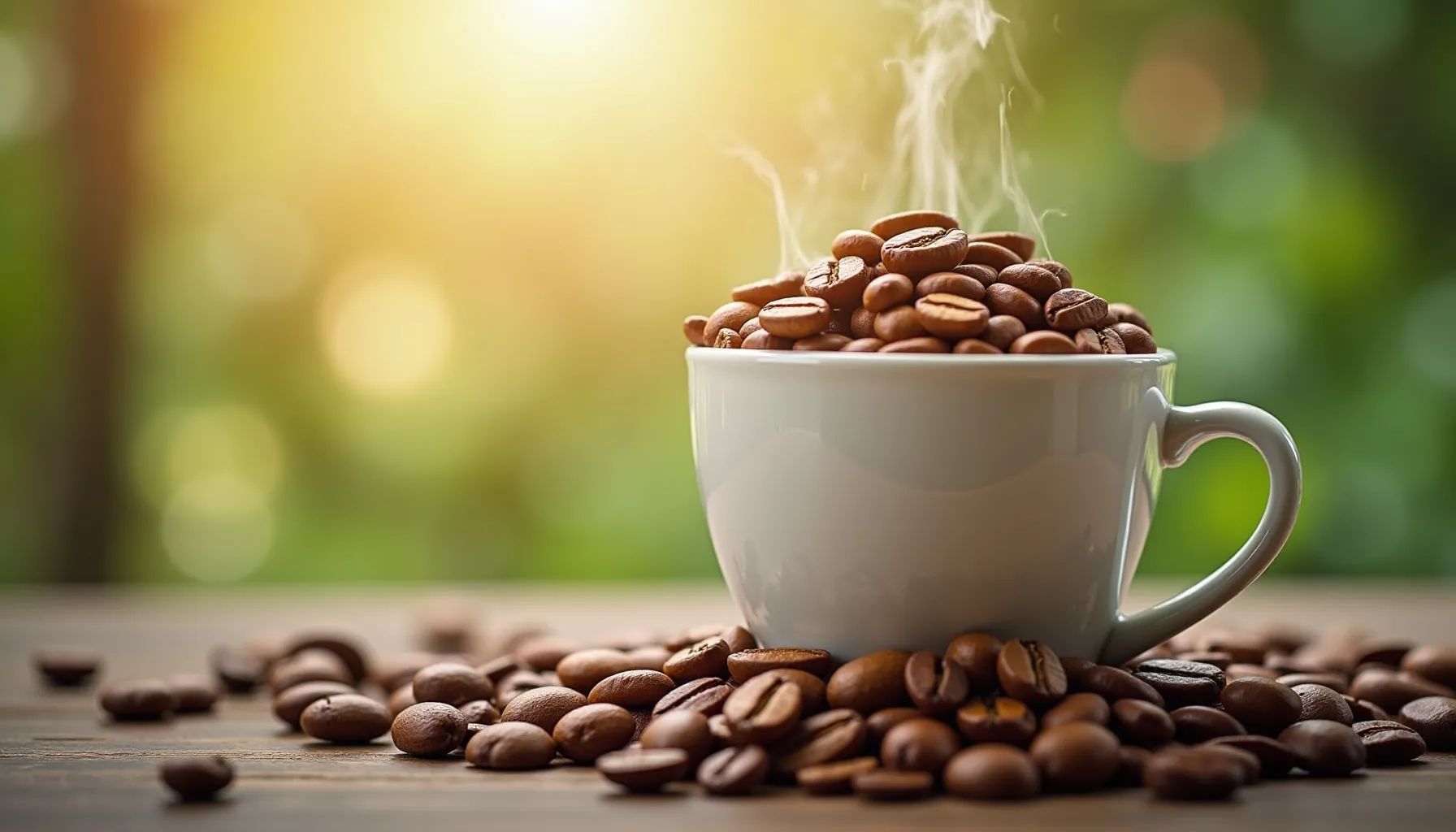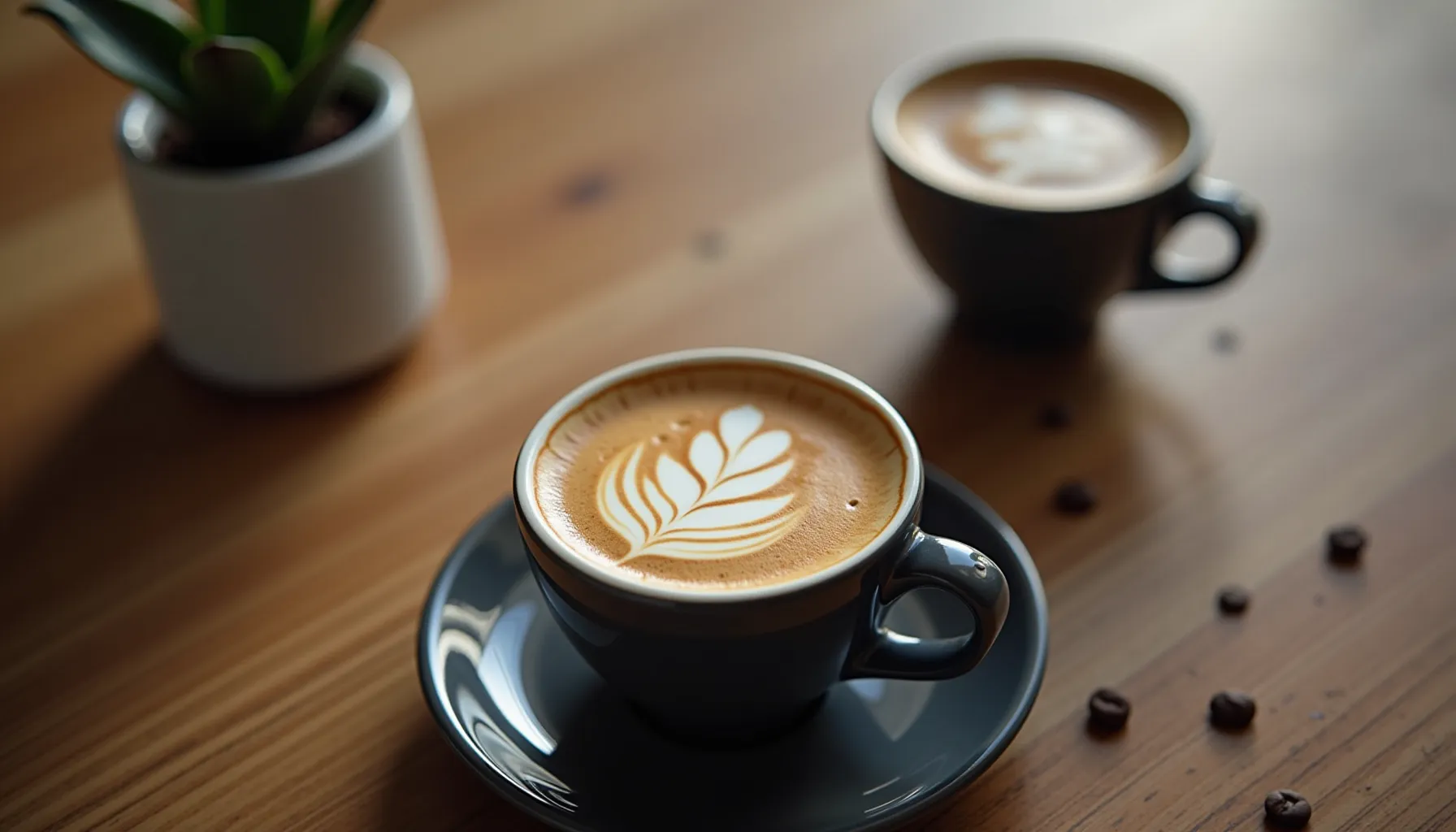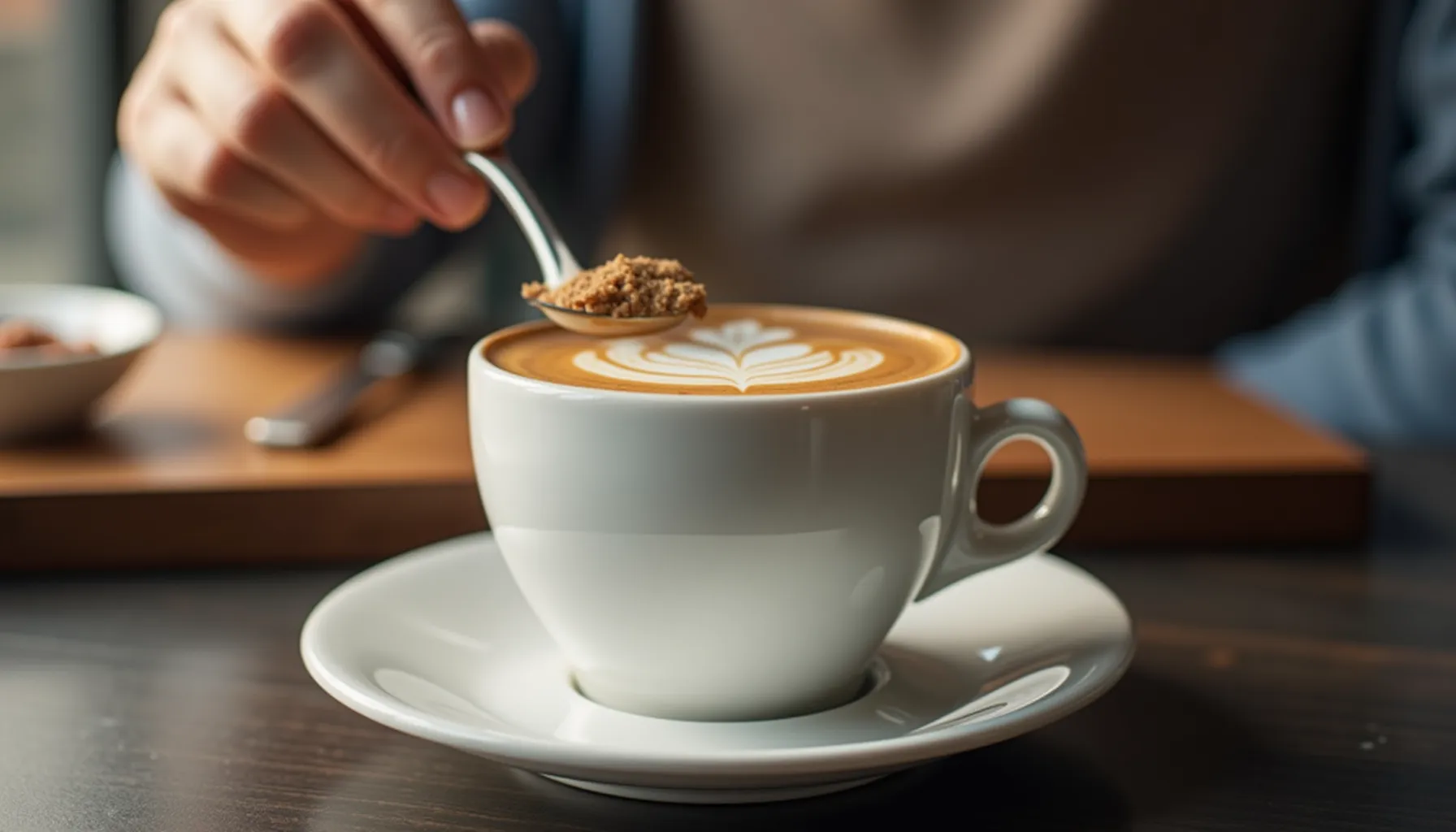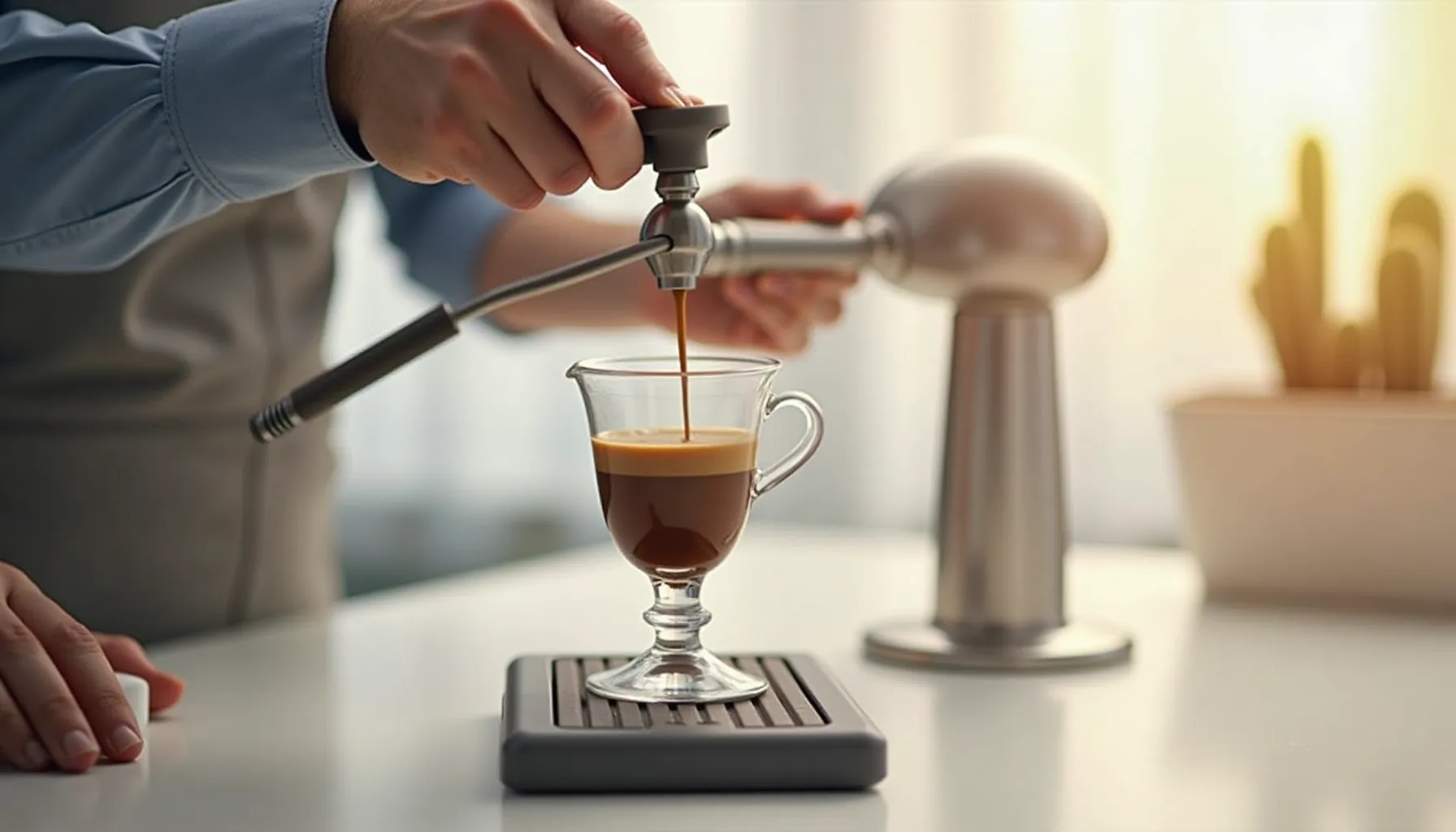Espresso coffee, a term that resonates with complexity and sophistication, is the quintessence of coffee brewing. It's not just a drink; it's a craft, a ritual, and for many, a daily necessity. This article embarks on a journey to demystify espresso, from the meticulous selection of beans to the artful process of extraction.
Key Takeaways:
- Uncover the essentials of espresso coffee and its unique brewing process.
- Learn about the best espresso coffee selections to elevate your coffee experience.
- Explore the importance of choosing the right espresso coffee beans for the perfect cup.
Introduction to Espresso Coffee: More Than Just a Quick Caffeine Fix
Espresso coffee stands as a testament to the intricacies of flavor that can be extracted from a simple coffee bean. It's a concentrated beverage brewed by forcing a small amount of nearly boiling water through finely-ground coffee beans. While espresso may be ubiquitous, its true essence is often shrouded in mystery and misconceptions.
Understanding Espresso - Dose (Episode #1) by James Hoffmann offers a deep dive into the world of espresso, starting with the fundamental aspect of dosing. This video is an excellent resource for both beginners and seasoned coffee enthusiasts looking to refine their espresso knowledge.
The Quest for the Best Espresso Coffee: A Connoisseur's Pursuit
The pursuit of the best espresso coffee is a personal and subjective quest. It's about finding that perfect balance of bitterness, acidity, body, and aroma that resonates with your palate. The best espresso is often the result of trial, error, and a lot of tastings.
For those eager to learn more about crafting the perfect espresso at home, The Espresso Guide For Beginners by Joshua Weissman is an invaluable guide. It simplifies the process and ensures that even novices can achieve barista-level quality in their brew.
Espresso Coffee Beans: The Foundation of Every Great Espresso
Selecting the right espresso coffee beans is crucial. These beans are typically a darker roast, which allows the natural oils to rise to the surface, contributing to the espresso's full-bodied flavor and crema. The origin, variety, and roast profile of the beans can dramatically alter the taste of your espresso.
For a practical demonstration on selecting and using espresso beans, How to Make Espresso (Like a Coffee Nerd) by Tanner Colson is a must-watch. It provides insights into the precision and care required to turn quality beans into exceptional espresso.
Photo by Kimiya Oveisi on Unsplash
The Art and Science of Espresso Extraction
Understanding the Process
The extraction of espresso is both an art and a science. It involves the right combination of grind size, water temperature, and pressure to extract the coffee's soluble flavors. The goal is to achieve a harmonious balance between the sweet, acidic, and bitter components of the coffee.
Grind Size: The grind size for espresso is finer than that of other brewing methods, often compared to the texture of powdered sugar. This fine grind is essential for creating the resistance necessary for the pressurized water to extract the coffee flavors properly.
The Role of the Espresso Machine
The espresso machine is the heart of the espresso-making process. It's responsible for heating the water to the right temperature and creating the pressure needed to brew the coffee. Modern machines offer a range of settings that can be adjusted to suit the specific coffee bean and desired extraction.
Tamping: The Key to Consistency
Tamping is the act of compressing the coffee grounds into the portafilter. It's a critical step that ensures an even and consistent extraction. The tamp pressure should be firm but not forceful, aiming for a level and compact bed of coffee.
The Perfect Shot: Timing and Ratios
A standard espresso shot is typically 1 ounce (30 ml) and is extracted over 25-30 seconds. The ratio of coffee to water, or the brew ratio, is another critical factor. A common starting point is a 1:2 ratio, meaning for every gram of coffee, two grams of water are used.
Monitoring the Extraction
As the espresso extracts, it's essential to monitor the color and flow rate. The first coffee to come out is dark, which then transitions to a golden brown stream, known as the "blonding" phase. The extraction is usually stopped once the color lightens significantly, indicating that most flavors have been extracted.
Troubleshooting Common Issues
Common issues with espresso extraction include shots that run too fast or too slow, indicating a problem with the grind size or tamping consistency. Adjusting these variables can help achieve the desired extraction rate.
Espresso Coffee at Home: Tips for the Home Barista
Choosing the Right Equipment
To make espresso at home, you'll need an espresso machine and a good quality grinder. The machine doesn't have to be expensive, but it should be capable of reaching the necessary pressure and temperature. The grinder is equally important, as fresh, finely ground coffee is essential for a good espresso.
The Importance of Fresh Beans
Freshness is key when it comes to espresso beans. Coffee begins to lose its flavor soon after roasting, so for the best espresso, use beans that have been roasted within the past two weeks.
Water Quality Matters
The water used to brew espresso should be clean and free of impurities. Water quality can affect the taste of the espresso, so using filtered or bottled water is recommended if the tap water is not ideal.
Preheating Is Essential
Before brewing, it's important to preheat the espresso machine and the cup. This ensures that the temperature is stable throughout the extraction process, which is crucial for a good espresso.
Practice Makes Perfect
Making espresso is a skill that takes practice to perfect. Don't be discouraged by initial failures; even professional baristas spend a considerable amount of time honing their craft.
Espresso Variations: Exploring Beyond the Classic Shot
Espresso serves as the foundation for a variety of coffee drinks. Understanding how to make a good espresso shot opens up a world of possibilities, from lattes and cappuccinos to macchiatos and Americanos.
Latte Art: A Creative Touch
Latte art is the practice of pouring steamed milk into espresso in a way that creates patterns on the surface of the coffee. It's a skill that combines the science of espresso with the art of presentation.
The Americano: A Milder Option
For those who prefer a milder coffee, the Americano offers the flavors of espresso diluted with hot water, resulting in a strength similar to drip coffee but with the unique espresso taste.
The Macchiato: A Stronger Alternative
The macchiato is a stronger option, consisting of a shot of espresso topped with a small amount of frothed milk. It offers a more intense coffee flavor with just a hint of creaminess.
The Cappuccino: A Balanced Blend
The cappuccino strikes a balance between espresso, steamed milk, and foam, creating a rich and creamy coffee drink that highlights the espresso's flavors without overpowering them.
The Cultural Significance of Espresso
Espresso is more than just a coffee drink; it's a cultural icon. It's associated with Italian tradition, sophistication, and a love for the finer things in life. The act of drinking espresso is often a social affair, a moment to pause and enjoy the company of others.
Espresso Around the World
While espresso has its roots in Italy, it has become a global phenomenon. Each country has adapted it to its tastes and traditions, creating a diverse tapestry of espresso-based drinks.
The Espresso Bar: A Social Hub
Espresso bars are social hubs where people gather to chat, read, work, or simply enjoy a quick coffee break. They play a significant role in the social fabric of many communities.
The Health Benefits of Espresso
Espresso, when consumed in moderation, offers several health benefits. It's rich in antioxidants and has been linked to a reduced risk of certain diseases. However, it's important to be mindful of caffeine intake and to enjoy espresso as part of a balanced diet.
Caffeine Content in Espresso
Despite its strong flavor, a single shot of espresso contains less caffeine than a typical cup of drip coffee. This makes it a suitable option for those who want a quick boost without overdoing it on caffeine.
Antioxidants in Coffee
Coffee is a significant source of antioxidants, which can help protect the body from damage caused by free radicals. These antioxidants contribute to the health benefits associated with moderate coffee consumption.
Potential Health Risks
While there are many benefits to drinking espresso, it's important to be aware of potential health risks. Excessive caffeine consumption can lead to negative side effects, and some people may be more sensitive to caffeine than others.
Advanced Espresso Brewing Techniques
Mastering espresso brewing is a craft that combines science and artistry. Advanced techniques can significantly enhance the flavor profile of your espresso shot. For instance, the use of pressure profiling allows baristas to adjust the extraction pressure during the brewing process, leading to a more balanced and complex espresso. James Hoffmann, a renowned coffee expert, offers a deep dive into the intricacies of espresso in his video series on advanced brewing techniques.
The Role of Water in Espresso Extraction
The quality of water used in brewing espresso cannot be overstated. Water composition affects the extraction of flavors from the coffee grounds. Soft water can under-extract, leading to a flat taste, while hard water can over-extract and cause bitterness. Filtration systems and water softeners are often used to achieve the ideal water composition for the perfect espresso shot.
The Art of Espresso Blends and Single Origins
Espresso blends are crafted to create a balanced and consistent flavor profile. The blending of beans from different origins can complement and enhance the overall taste. On the other hand, single-origin espressos are becoming increasingly popular among enthusiasts looking to experience the unique characteristics of a specific region's beans.
The Espresso Machine: A Barista's Canvas
The espresso machine is the tool through which baristas express their craft. Understanding its mechanics and maintenance is crucial for consistently high-quality espresso.
Choosing the Right Espresso Machine
Selecting an espresso machine is a significant decision for any coffee lover. Factors to consider include the machine's pressure capabilities, temperature stability, and ease of use. High-quality machines like those from La Marzocco offer advanced features that can cater to both beginners and experienced baristas.
Maintenance and Care for Longevity
Regular cleaning and maintenance of your espresso machine ensure its longevity and the quality of your coffee. Descaling, backflushing, and replacing worn parts are all part of a routine that keeps the machine in top condition.
The Sensory Experience of Espresso Tasting
Tasting espresso is a sensory journey. It starts with the visual appeal of the crema, followed by the aroma, and finally, the flavors that dance on the palate.
The Crema: Espresso's Golden Cloak
The crema is the layer of creamy foam that sits on top of a freshly brewed espresso. It is rich in flavor and aroma, and its presence is a sign of a well-extracted shot.
Aroma and Flavor: The Heart of Espresso
The aroma of espresso can reveal much about its quality and the beans used. Flavor notes can range from fruity and floral to chocolatey and nutty, depending on the bean's origin and roast profile.
The Future of Espresso: Innovations and Trends
The world of espresso is ever-evolving, with new innovations and trends continually emerging.
Sustainability in Coffee Production
Sustainability is becoming increasingly important in the coffee industry. Efforts are being made to ensure ethical sourcing, environmental protection, and fair compensation for coffee producers.
The Rise of Home Espresso Enthusiasts
With advancements in home espresso machines, more people are exploring the art of espresso brewing in their kitchens. This trend is leading to a new wave of coffee enthusiasts who are pushing the boundaries of what can be achieved outside of the coffee shop.
Conclusion
Espresso is a complex and captivating beverage that offers a world of flavors to explore. From the careful selection of beans to the precise brewing techniques, every step in the process contributes to the final cup's quality. As we continue to innovate and push the boundaries of what espresso can be, we also honor the traditions and craftsmanship that have made this beverage a beloved part of cultures around the world.
The journey of espresso is one of constant learning and passion. Whether you're savoring a classic espresso or experimenting with new brewing methods, the pursuit of the perfect shot is a rewarding endeavor that brings joy and inspiration to coffee lovers everywhere.
Frequently Asked Questions
-
What is the best way to store espresso beans?
- Espresso beans should be stored in an airtight container away from light, heat, and moisture to preserve their freshness.
-
Can I make espresso without an espresso machine?
- While traditional espresso requires high pressure that is typically provided by an espresso machine, there are alternative brewing methods like Aeropress that can mimic the espresso experience.
-
How important is the grind size for making espresso?
- The grind size is crucial for proper espresso extraction. It should be fine enough to create resistance to the water flow, resulting in a well-extracted shot with a rich crema.
-
What is pressure profiling in espresso brewing?
- Pressure profiling is the ability to control the water pressure throughout the extraction process, allowing for a more nuanced and tailored espresso shot.
-
How often should I clean my espresso machine?
- It's recommended to backflush with water daily and with a cleaning solution weekly. Descale the machine according to the manufacturer's guidelines, usually every 3-6 months.













